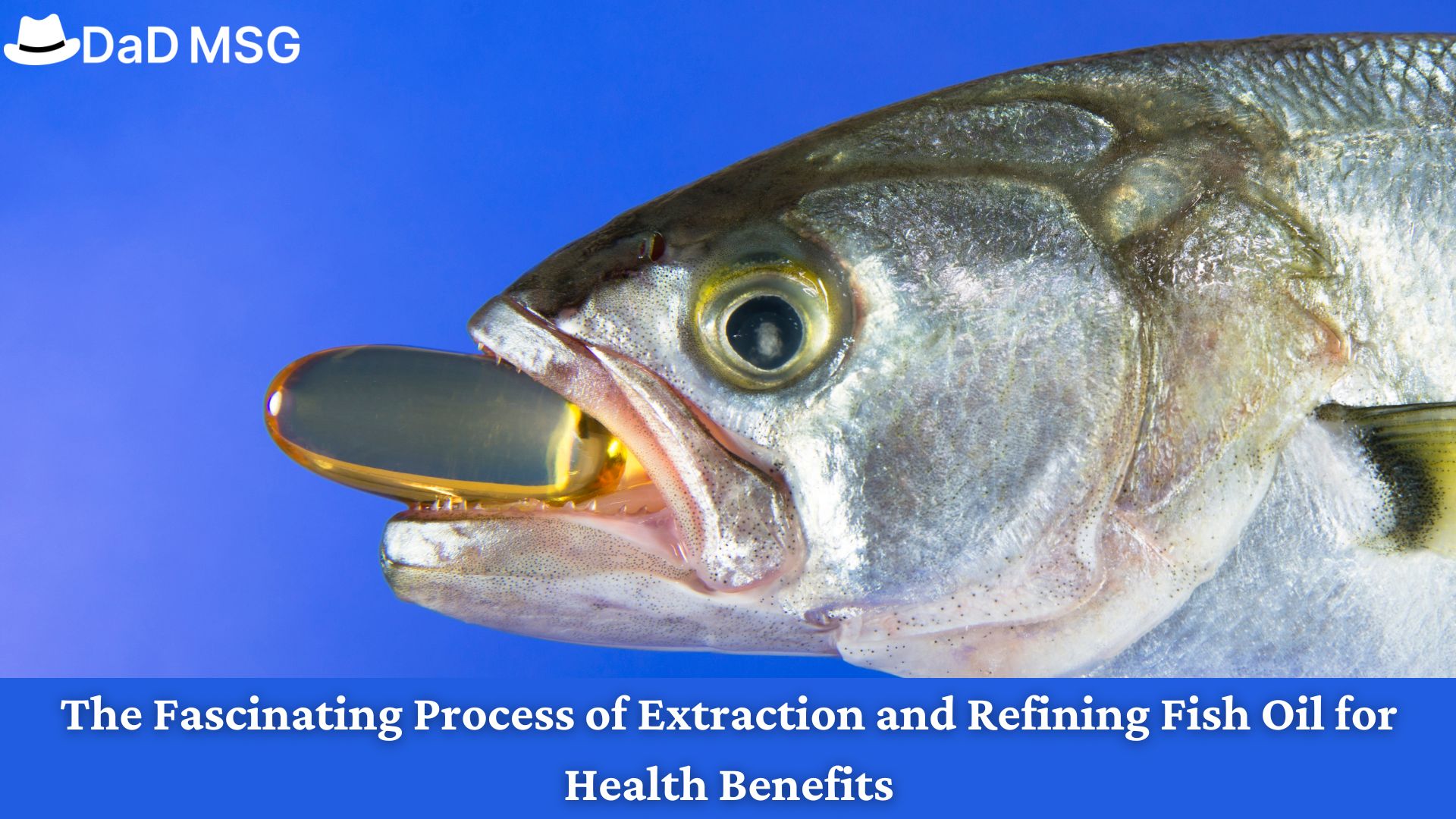A common dietary supplement that is high in omega-3 fatty acids is fish oil. It is frequently employed to promote joint health, brain health, and heart health. But few people are aware of the procedures used to extract, refine, and concentrate fish oil. We shall go into great detail about these techniques in this essay.
Where is Fish Oil Extracted From?
The tissues of oily fish, including salmon, mackerel, herring, and tuna, are used to extract fish oil. Omega-3 fatty acids, which are essential for human health, are abundant in this fish. Typically, fish by-products like the liver, which has a high concentration of omega-3 fatty acids, are used to extract the oil. The head, skin, and bones of the fish can all be used to extract the oil.
Methods of Fish Oil Extraction
Fish oil is extracted using a variety of techniques, both conventional and contemporary. The fish is heated in the traditional technique to liberate the oil, which is then gathered and refined. However, this approach is not particularly effective and may produce a little amount of fish oil.
Utilizing a fish oil extraction machine is the modern method of obtaining fish oil. The oil from the fish is extracted by the machine using a combination of heat, pressure, and solvents. The fish are first boiled to liberate the oil, which is then spun in a centrifuge to separate it from the solid components. After that, the oil is cleaned through a number of filters and distillation procedures.
Fish Oil Extraction Machine
A piece of machinery called the fish oil extraction machine is used to extract fish oil from whole or by-product fish. The oil is extracted by the machine using a mixture of pressure, heat, and solvents. Steam is used to cook the fish at first, which helps the fish release its oil. After being fed into the machine, the fried fish are put under high pressure to help separate the oil from the solid components. A centrifuge is then used to remove the solid components from the oil. The oil separates from the solids as a result of the centrifuge’s rapid spinning. After that, the oil is cleaned through a number of filters and distillation procedures.
How is Omega-3 Fish Oil Extracted?
The same techniques used to obtain ordinary fish oil are used to extract omega-3 fish oil. Only that omega-3 fish oil is made from oily fish, which are known to have high levels of omega-3 fatty acids, is the only distinction between them. The oil is first released from the fish by steam cooking, and it is then separated from the solid components using a centrifuge. After that, the oil is cleaned through a number of filters and distillation procedures. The end result is an omega-3 fish oil concentration that is used in dietary supplements.
Refining and Concentration of Fish Oil
Following extraction, the fish oil is refined and concentrated to remove contaminants and raise the omega-3 fatty acid content. Any undesired components, including free fatty acids, heavy metals, and other impurities, are taken out during the refining process. The concentration of omega-3 fatty acids is then increased by utilizing a procedure known as molecular distillation to concentrate the oil.
Refining is important because it gets rid of any contaminants that can be bad for human health. To prevent phospholipids from making the oil go rancid, the oil is first degummed.After that, the oil is bleached to remove any odor or color that is undesirable. After that, the oil is deodorized to get rid of any unwelcome tastes or odors.
To increase the quantity of omega-3 fatty acids in fish oil after refining, it is then concentrated. In order to concentrate, a procedure known as molecular distillation is used. This method helps separate the various components of the oil based on their molecular weight by submitting the fish oil to high temperatures and low pressures. The omega-3 fatty acids have a lower molecular weight than the other components, therefore they are separated and concentrated.
The purity and potency of the concentrated fish oil are next examined to make sure it satisfies the necessary requirements. Heavy metals, PCBs, and other pollutants are tested in order to assess the oil’s purity. Testing the oil’s omega-3 fatty acid concentration yields information about its potency.
After being packaged in capsules or bottles, the concentrated fish oil is then offered for sale as a dietary supplement. The amount of omega-3 fatty acids in the supplement and its intended application determine its dosage. A dosage of 500–1000 mg per day is advised for maintaining general health. Higher doses could be suggested for some medical disorders, like heart disease.
Conclusion
As a popular nutritional supplement that is high in omega-3 fatty acids, fish oil is a good choice. It is taken out of the oily fish tissues, including tuna, mackerel, herring, and salmon. Solvents, pressure, and a combination of heat are used to extract the oil. Utilizing fish oil extraction equipment is the latest extraction technique. To get rid of any contaminants and raise the omega-3 fatty acid content, the extracted oil is refined and concentrated. A concentrated version of fish oil, utilized in dietary supplements, is the end result. The amount of omega-3 fatty acids in the supplement and its intended application determine its dosage. It is important to choose a high-quality fish oil supplement that is free from contaminants and meets the required standards.




